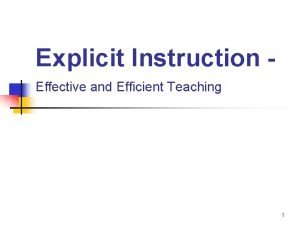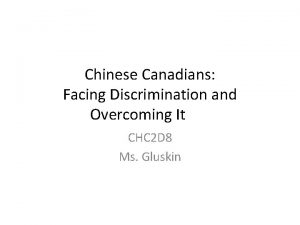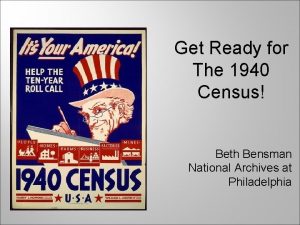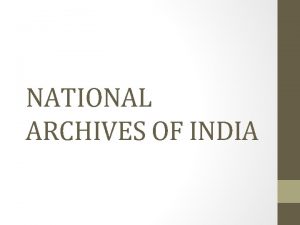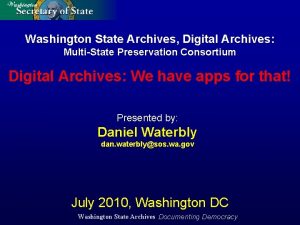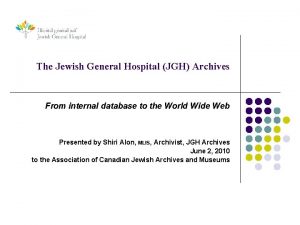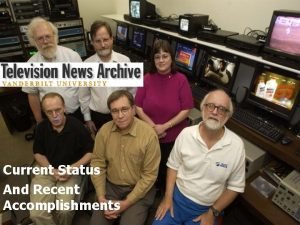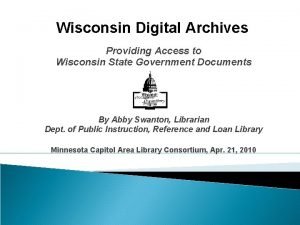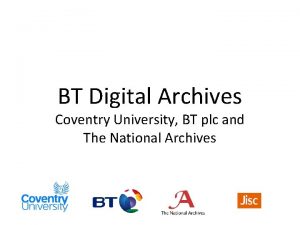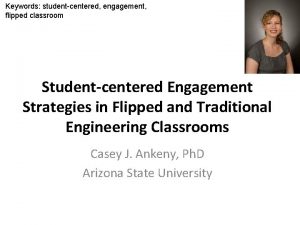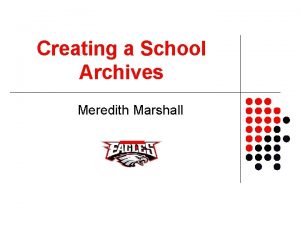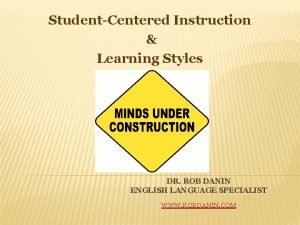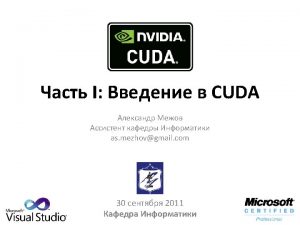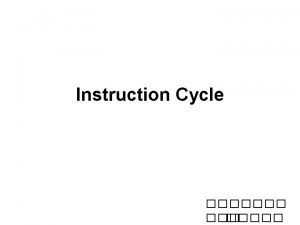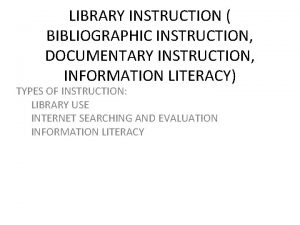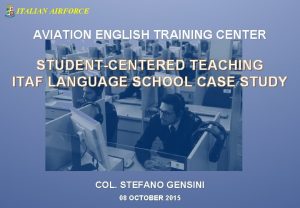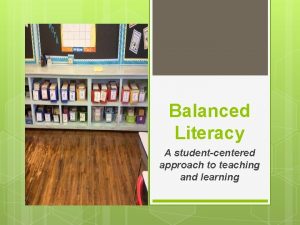Teaching from the Archives Creating StudentCentered Instruction with











- Slides: 11

Teaching from the Archives: Creating Student-Centered Instruction with Archival Materials ACRL IS Current Issues Discussion American Library Association Annual Conference, 2017 Jill M. Borin, Associate Librarian and University Archivist Molly M. Wolf, Associate Librarian and Sexuality Archivist, Widener University.

Archives at Widener University Archives Sexuality Archives v The University Archives collection includes approximately 1, 848 linear feet of print materials. v v There are 10, 129 individual digital items organized into 51 separate digital exhibits. v The Sexuality Archives collections include thousands of books, periodicals, personal papers, pamphlets, audiovisual materials, and ephemera as well as a presence on: • Facebook - Widener University Sexuality Archives • Twitter - @Sexual. Archives • Tumblr - sexualityarchives 27, 000 digital images on cloud storage. • Digital Collections http: //digitalwolfgram. widener. edu • Twitter - @Widener. Archives • Facebook – Widener University Archives

Our Collaboration Current Created an Exhibit on library’s digital collections website - This collection celebrates the intersections of the digital collections of both the Widener University Archives and the Sexuality Archives. Future Creating a Curriculum for a Freshman Seminar using archival materials from both archives to teach information literacy. Presenting a workshop for faculty on incorporating digital archival materials into their pedagogy. Creating a joint presence on Instagram and other social media platforms.

Digital Exhibit Created “Intersections - Sexuality and University Archives Together” Digital Exhibit using CONTENTdm. Includes over 140 images, pamphlets, and other documents covering the issues of gender, sexuality, women’s roles, feminism and LGBTQ rights. Presents materials in chronological order, from 1886 to 2016, to show Widener and its predecessor institutions served as a reflection of the evolution of thought on these issues. Intersections: Sexuality and University Archives Together

Document Analysis University Archives v Philadelphia Public Ledger, 1921 Sexuality Archives v Laws Concerning Birth Control in the United States, 1929

Self-Directed Research Process Flow Chart

Proposed Primary Source IL Standards Carini’s Standards Adapted Outcomes Knows that both archives exist and contain a rich variety of primary sources. Interpret Understands how to interpret the historical context of our archival materials. Evaluate Understands which archival materials are useful and appropriate for the specific research topics. Use Understands the unique nature of our archival materials, how to physically handle them and how they may inspire change to the research plan. Access Knows how to find additional primary and secondary source collections related to research. Follow Ethical Procedures Understands the importance of using the archives’ primary source materials responsibly in final research project. Carini, Peter. 2016. “Information Literacy for Archives and Special Collections: Defining Outcomes. ” portal: Libraries and the Academy 16(1): 193 -208.

Proposed Primary Source IL Standards Rationale for Standards 1. Identify a series of goals that will guide the curriculum planning process. 2. Give librarians and archivists the useful language to advocate for this kind of instruction with University Faculty. 3. Provide guidelines for assessment of this instruction. Carini, Peter. 2016. “Information Literacy for Archives and Special Collections: Defining Outcomes. ” portal: Libraries and the Academy 16(1): 193 -208.

Discussion Questions In your opinion, what is the value of using archival documents/ primary sources in information literacy instruction? How have you incorporated archival documents/primary sources into your teaching? If you have not, how do you plan to incorporate archival documents/primary sources into your teaching in the future?

Discussion Questions What were your challenges and successes with incorporating archival documents/primary sources into your teaching? What one activity did your students enjoy the most? What are the standards that you would create to guide this kind of instruction?

Thank You Contact Information: Jill M. Borin, M. A, M. L. I. S. Librarian & University Archivist 610 -499 -4376 jmborin@widener. edu Molly M. Wolf, M. A. , M. Ed. Librarian & Sexuality Archivist 610 -499 -4075 mmwolf@widener. edu
 Individualized instruction vs differentiated instruction
Individualized instruction vs differentiated instruction Direct vs indirect instruction
Direct vs indirect instruction Examples of explicit instruction
Examples of explicit instruction Religious archives examples
Religious archives examples Tom thoon
Tom thoon Edhint
Edhint Write a brief note on the national archives of india
Write a brief note on the national archives of india Ducumom
Ducumom Jewish general hospital archives
Jewish general hospital archives Television news archive
Television news archive Wisconcin digital archives
Wisconcin digital archives Bt digital archives
Bt digital archives


